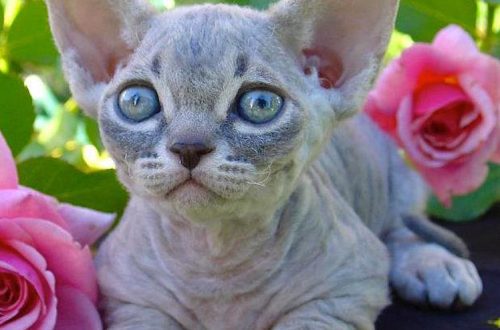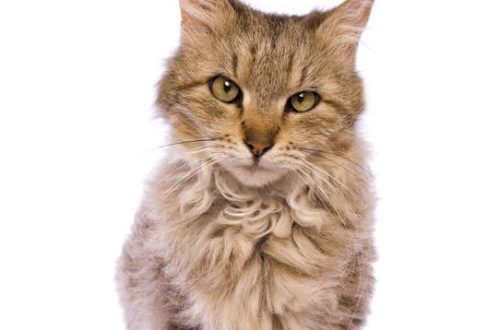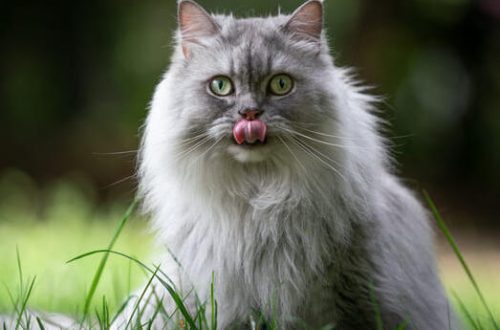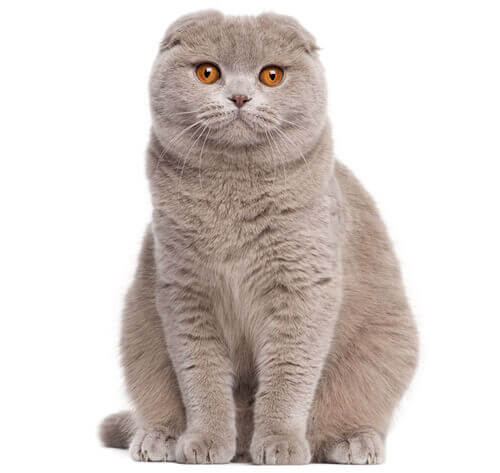
Scottish Fold
Other names: scottish , scottish fold cat
The Scottish Fold cat is one of the youngest breeds. It is distinguished by its unique appearance, grace and a very high level of intelligence.
Contents
- Characteristics of Scottish Fold
- Basic moments
- History of the Scottish Fold cat breed
- Video: Scottish Fold cat
- Appearance of the Scottish Fold cat
- Photo of a Scottish Fold cat
- The nature of the Scottish Fold cat
- Education and training
- Care and maintenance
- Health and disease of the Scottish Fold cat
- How to choose a kitten
- Photo of Scottish Fold kittens
- How much does a scottish fold cat cost
Characteristics of Scottish Fold
| Country of origin | Great Britain |
| Wool type | Shorthair |
| Height | up to 30 cm |
| Weight | from 4 to 10 kg |
| Age | 15–20 years |
Basic moments
- Representatives of the Scottish Fold breed can be undoubtedly attributed to the most problem-free in terms of home maintenance and care. They are surprisingly smart and friendly.
- Among the behavioral features, one can note the love inherent only in this breed from time to time to become a column, taking the “meerkat pose”. Animals do this not for fun, but in order to relax the spine.
- Surprisingly for cats, almost all lop-eared Scots do not really like height, so you do not have to remove your pet from curtains or mezzanines.
- As true representatives of foggy Albion, representatives of this breed are very fond of society, but you can’t call them obsessive.
- They are playful and highly trainable. There will definitely be no problems with accustoming an animal to a tray – all cats of this breed are extremely clean.
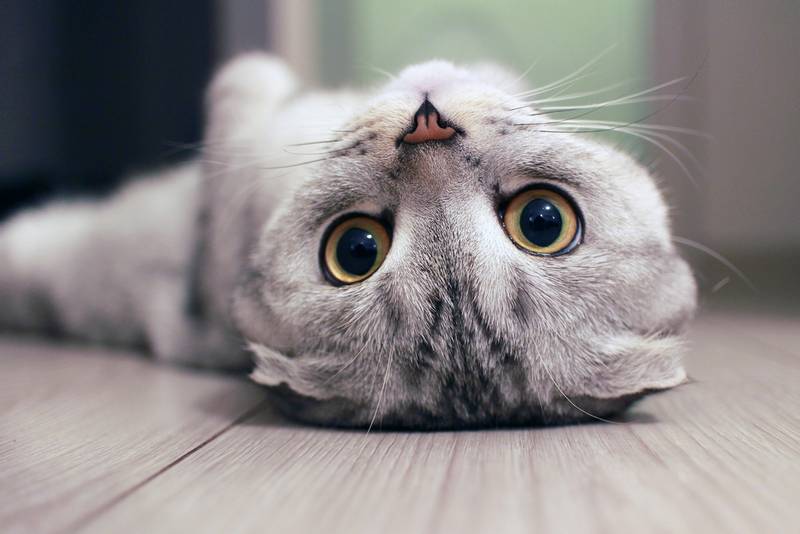
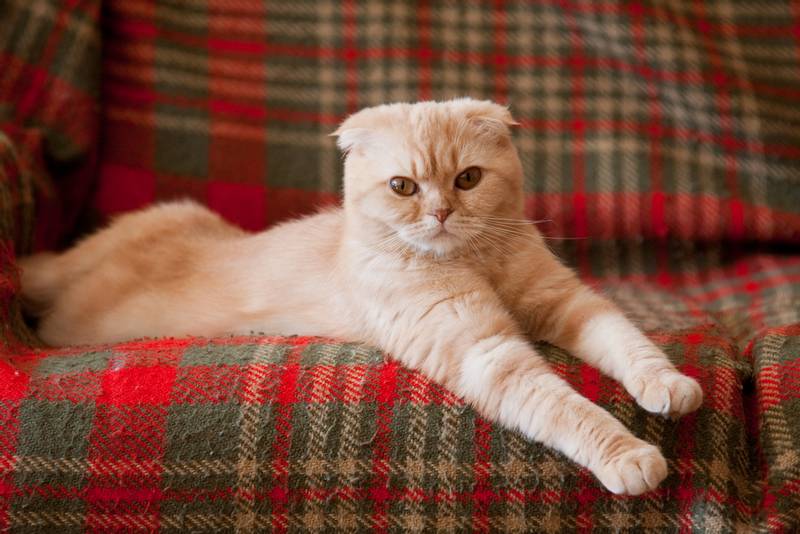

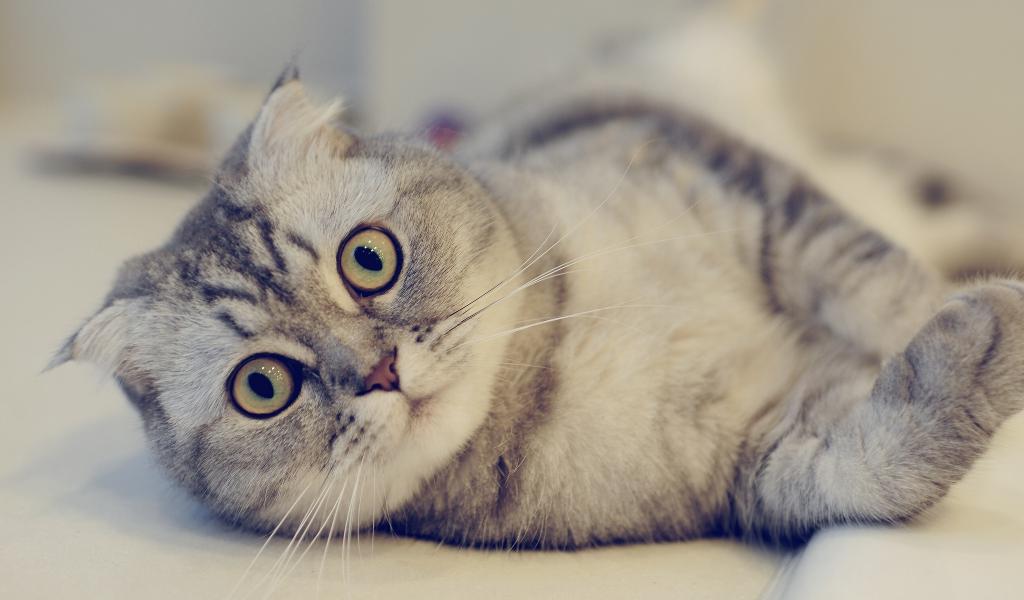
Scottish fold cat (Scottish Fold) is an animal, the main exterior feature of which is a special shape of the ears. They are bent forward and down and according to the canons should not protrude beyond the contour of the head. Due to their original appearance, representatives of this breed are very popular among cat lovers around the world. Noble disposition and natural playfulness, self-esteem and sincere affection for the house and owners create a unique image that distinguishes the Scottish Fold cat.
History of the Scottish Fold cat breed
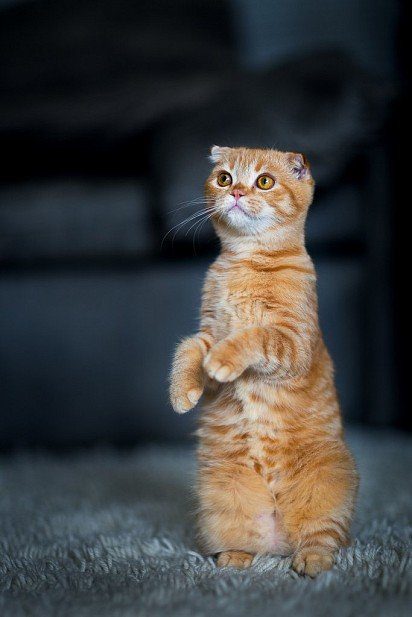
Usually, the appearance of new breeds is preceded by a long-term purposeful selection work. In the case of Scottish Fold, the situation is different.
The first mention of cats similar to the Scottish Fold is found in the literature describing white long-haired cats living in China. At one time, representatives of this breed were even called Chinese – it was believed that they live only in this eastern country.
However, in 1961, the first cat with such a characteristic ear shape was born on one of the Scottish farms. They named her Susie. The mother of an unusual kitten was an ordinary semi-wild tabby, and the father remained unknown. Among the kittens that Susie brought regularly were babies with very unusual ears. One of these cats in 1963 fell into the hands of Mary Ross. She was given the name Snooks. In her first litter, Mary discovered a white kitten, whose appearance made it clear to the owner that she might be present at the birth of a new breed. To test her assumptions, she crossed a grown kitten with a British shorthair cat ., and Snooks with a British blue cat.
As a result of the experiment, kittens were born, which became the first representatives of the lop-eared Scots. The algorithm for breeding the breed on a scientific basis was put by professional breeders and geneticists. It was found that the characteristic lop-earedness is due to the presence of a special Fd gene. In the case of the FdFd combination, that is, when both parents had ears folded down, the offspring had very serious problems with the musculoskeletal system. Selection experiments have shown that health complications in kittens can only be avoided if one of the parents has erect ears. Born from animals, one of which had the “fold-eared gene” (Fd), and the other did not have it (fd), babies could carry the external signs of both a cat and a cat british shorthair .
And only recently, felinologists singled out a separate breed, which they called “Scottish Straight” (Scottish Shorthair). These cats have erect ears, and in all other respects they are exact copies of their lop-eared counterparts, which is why, in order to preserve the characteristic features, the Scottish fold should only be knitted with a straight.
The breed was officially registered in 1994.
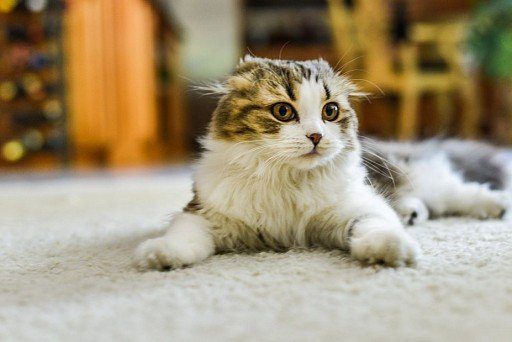
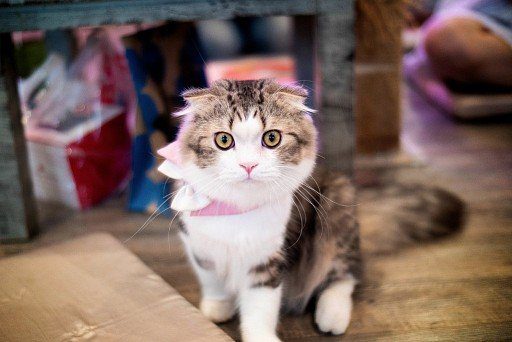
Video: Scottish Fold cat
Appearance of the Scottish Fold cat
The history of the participation of Scottish Fold cats in exhibitions is not so long. To date, there is one general breed standard that all Scottish Folds must comply with. In addition, at major competitions, the judging panels apply three types of official norms to evaluate animals: WCF, CFA and TICA.
The appearance of a cat of the Scottish Fold breed must fully comply with all the requirements of the general breed standard.
Head
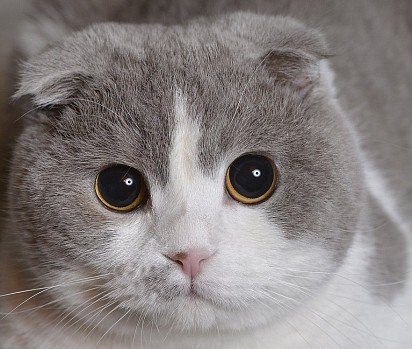
Rounded, with a strong chin, thick round cheeks and a high forehead. The chin is massive, strong. For adult cats, sagging cheeks are allowed. The nose of the Scottish Fold should be wide and short.
Ears
Small to medium in size, with slightly pointed tips. On the head are located widely. Fold forward and down. A special requirement is that they are folded and pressed, they must fit into the contour of the head, without protruding beyond its borders. There are three types of fold:
- single (only the tips are bent);
- double (the entire auricle is bent, the gap between the ears and the head is visible);
- triple (fully pressed, there is a visual effect of the absence of ears).
Eyes
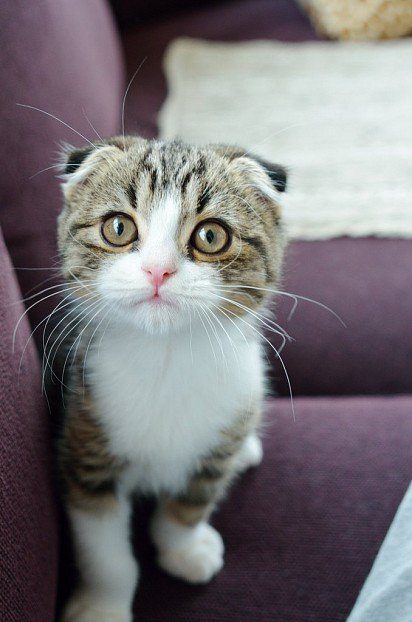
Widely spaced and round, large in size. An important point – the color of the eyes should correspond to the general color of the animal.
Neck
Scottish folds are characterized by a fairly short muscular neck.
Trunk and limbs
Scottish Fold cats have a medium-sized body, muscular, strong. Well-developed shoulders and chest are well defined. Limbs of medium length with developed muscles. The paws are small and round.
Tail
Size is medium to long. At the base – rather wide, gradually tapering to a rounded tip. Moveable and flexible.
Wool
The cover is dense, elastic and thick. Due to the high density, it does not adhere to the body of the animal, and it looks fluffy.
Color
The Scottish Fold can have the most varied coat tone. The breed standard does not impose any specific requirements in this matter. But when judges give marks at competitions, they will definitely take into account the correspondence of shade six to the color of the eyes, nose and paw pads, for example:
- color six is white. Eye color – golden or blue. The nose and paw pads are pink;
- wool is pure black. The eyes are just golden. Nose – black, paw pads – gray or black;
- for a smoky black color, exclusively black paw pads are considered harmonious. The color of the eyes and nose is the same as for the pure black color.
A variety of colors is one of the features that distinguishes the Scottish Fold from other breeds of cats, and certain requirements for matching the overall range are imposed on each representative of the breed.
Scottish Folds are medium sized cats. The weight of the female is from 3.5 to 4.5 kg, the males are larger – up to 6 kilograms.
Photo of a Scottish Fold cat
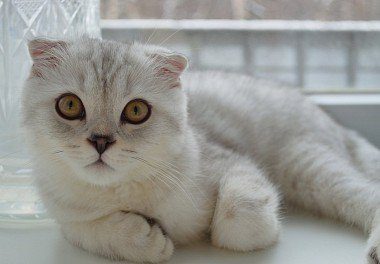
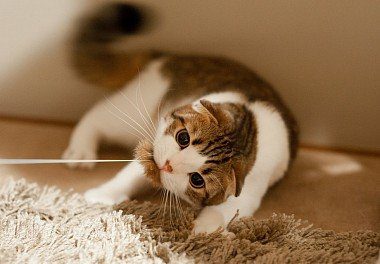
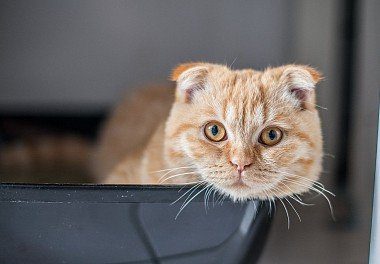
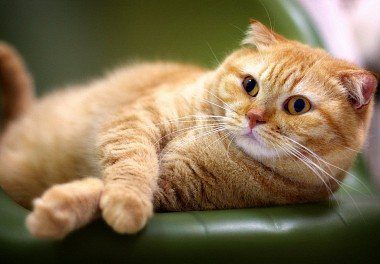
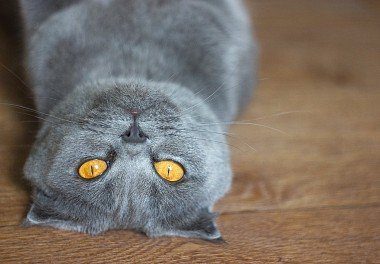
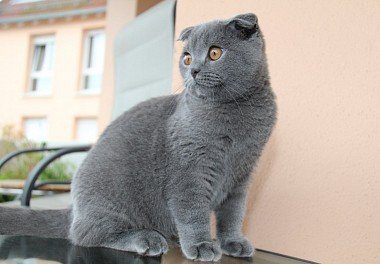
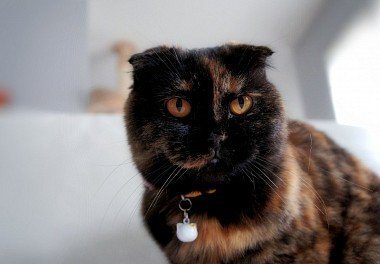
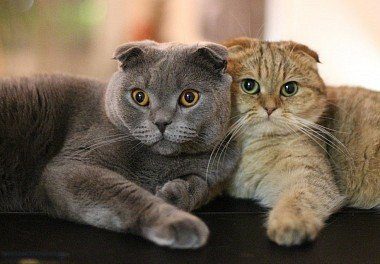
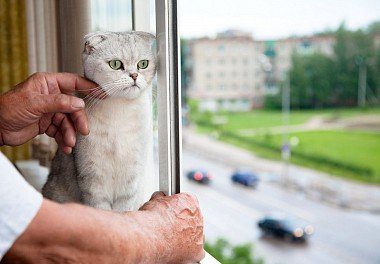
The nature of the Scottish Fold cat
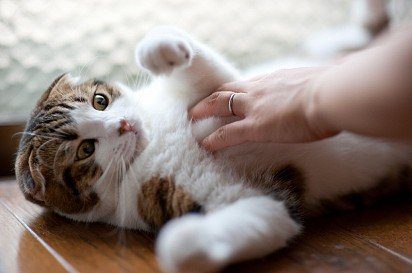
Everyone is well aware of the statement that the dog is attached to the owner, and the cat – to the place. In the case of Scottish Fold, both theses will be absolutely relevant and true.
The starting point for understanding the nature of the animal will be the fact that from the very beginning of the birth of the breed, Scottish Fold cats were bred and kept exclusively at home. Scottish folds are typical homebodies that feel great even in city apartments, although periodic walks in the fresh air will not harm the pet in any way.
When purchasing a Scottish Fold cat, you should consider that representatives of this breed are very affectionate and sensitive. They can be unsettled not only by rearranging the furniture in the house, which, by the way, cats of any breed do not like, but also by the long absence of the owner. Loneliness for the Scottish Fold is worse than physical pain. The animal may even become depressed. Kittens and young animals are especially vulnerable in this sense. The possibility of constant positive communication with a person is simply necessary for them.
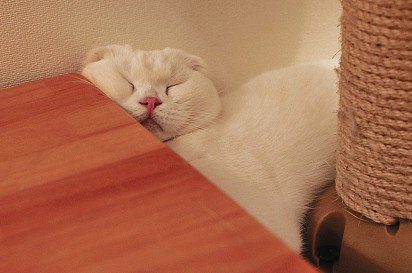
A calm, balanced, even somewhat phlegmatic character is inherent in almost all representatives of this breed. They are very kind and patient. Cases of aggressive behavior are so rare that many, seeing how the Scottish Fold refuses to go into conflict, think that he is simply afraid. This is not true. The Scot is a true gentleman (or lady), and prefers a secular solution to the problem – to ignore the ill-mannered bully, whether animal or person. If the Scottish Fold gets into a difficult situation, you can be sure that he will be able to stand up for himself.
The Scottish Fold cat is perfect for families with small children. The Scot will never release his claws, trying to avoid obsessive harassment from your child, but will prefer to retire aristocratically. Almost always, he will find a common language with other pets, although with dogs and rodents some tension in relations will be traced. Many are surprised to note that the seeming passivity and ostentatious slowness in no way interfere with the sometimes very vivid manifestation of the hunting instinct. Appearances can be deceiving, and even a cat whose favorite place is a sofa cushion or the owner’s knees will never refuse to warm up in the “sports corner” that you build for her in the house.
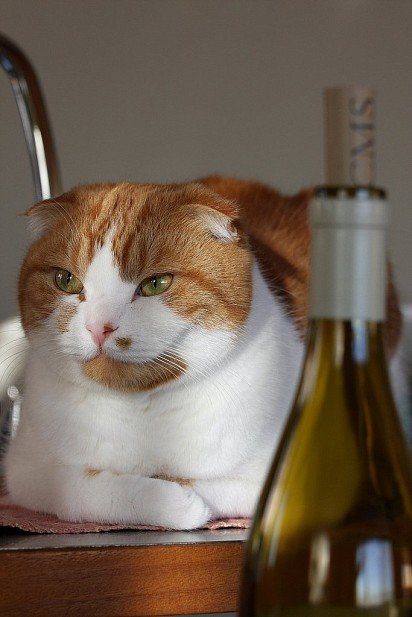
Another interesting trait of the Scottish Fold is its amazing practicality for animals. Although in this case we are not even talking about character traits, but about intelligence. A cat has never been considered a stupid animal anywhere, but all owners of folds note their amazing ability to differentiate information received from outside and use only that which will be beneficial to them and can be useful in life. It is difficult to explain the mechanism of such selectivity from the point of view of human logic, and it is not so necessary. Thanks to this feature, Scottish Folds are very well trained and educated, it is only important to find a common language with them.
By the way, about the language. Often the Scottish Fold is called a cat without a voice. This is not entirely fair. It’s just that the sounds that these animals make really bear little resemblance to cat meowing and are somewhat creaky, but is this a disadvantage?
The Scots are graceful and beautiful, so they are rightfully considered an adornment of any home. They are very playful, especially young ones, adults are distinguished by sedateness, equanimity and aristocracy. And the ability to stand in a “column” or sleep on your back, a touching “owl” face made Scottish folds the heroes of numerous photo shoots.
It does not matter whether you live alone or you have a large friendly family – the Scottish Fold cat will always look harmonious in your home. Attention, a kind word and a desire to understand a pet are the main components of a long-term friendship.
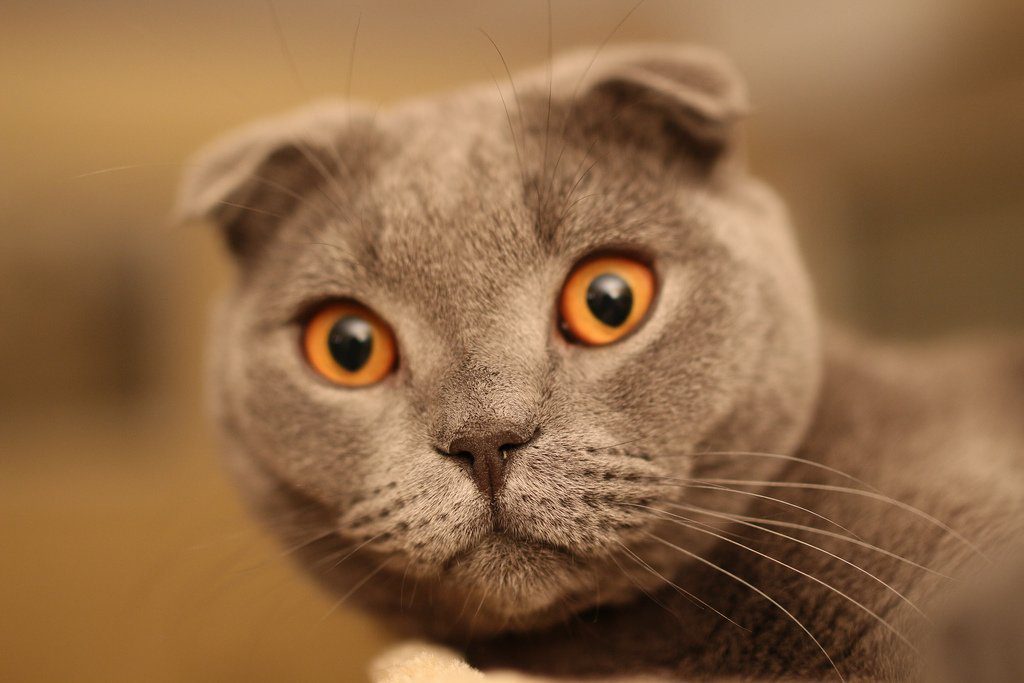
Education and training
It is important to understand that an animal is not a cute fluffy (but also fashionable) toy, but a creature that considers itself at least an equal member of your family. When purchasing a Scottish Fold cat, you should have a more or less clear idea of the rules and principles of raising your pet. You need to teach a cat to follow the rules of decency from a very early age, as soon as the baby appears in your house. Given the natural ingenuity of Scottish folds, this will not be so difficult to do.
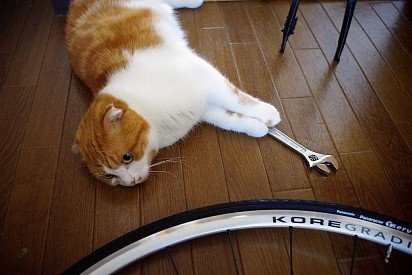
Lop-eared people are very sensitive to loneliness. Experts do not recommend leaving the animal alone for a long time. To pass the time, kittens either look for something to do on their own, or sleep most of the time. In the first case, when you return home, you may find traces of a small pogrom (discarded books, broken vases, pens and pencils scattered on the floor), in the second, a well-rested and rested kitten will haunt you endlessly, demanding lost attention. This can be expressed in attempts to climb up your legs on your knees, and in the desire to beautifully lie down on a written or computer table on papers with which you have just gathered to work, and in biting the fingers of a sleeping owner. This behavior looks cute at first, but over time it can become annoying.
What to do? The main thing – never drive the animal away. It will definitely not understand the reason for your dissatisfaction and may perceive everything that happens at this moment as a new game. It would be more correct to find an opportunity to take a break from business for at least a few minutes and take care of the kitten. Even a half container from Kinder Surprise or a ping-pong ball that you will throw on the floor will do as a toy. Catching such a “prey” is not so easy, and the kid will be seriously carried away by this activity. Be sure to take 15-20 minutes to play with the Scot before bed. This minimizes the risk of being woken up in the middle of the night. Trying to feed a kitten at night in the hope that he will calm down will only lead to the fact that the fold, quickly realizing what’s what, will start waking you up every night.
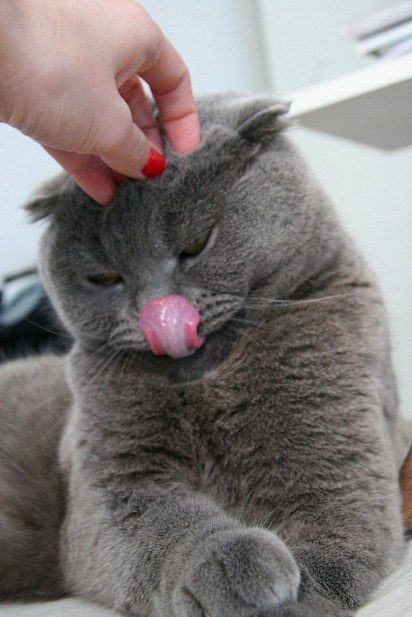
Attempts to bite your hands and feet must be firmly and unequivocally rebuffed. The kitten is brought up by his mother quite harshly, so your unwillingness to encourage rough play will be taken without resentment by the baby.
Another problem is the natural need of the animal to sharpen its claws. Sticking your nose into the ruined upholstery of an expensive chair won’t help. Buying a scratching post alone will not solve the problem, you will need to teach the cat how to use it. Install the device in a certain place and bring the baby to it several times during the day. Be sure to do this right after the little Scottish Fold wakes up. Praise the kitten for correct behavior. Good results are obtained by the use of special attracting odors. And the smell of orange peels, on the contrary, will discourage the desire to use an expensive carpet or sofa back as a means for manicure.
Scottish Fold cats are very clean, and accustoming them to the tray usually occurs without any difficulty.
Can an animal be punished? Maybe yes. A good effect is the use of a simple baby rattle. A noisy object (and a cat’s hearing is an order of magnitude better than ours), falling on its back (in no case do not hit the animal, a light touch is enough), quickly makes it clear to the pet that it is wrong about something.
But the basis of raising a Scottish Fold cat should still be your love and patience.
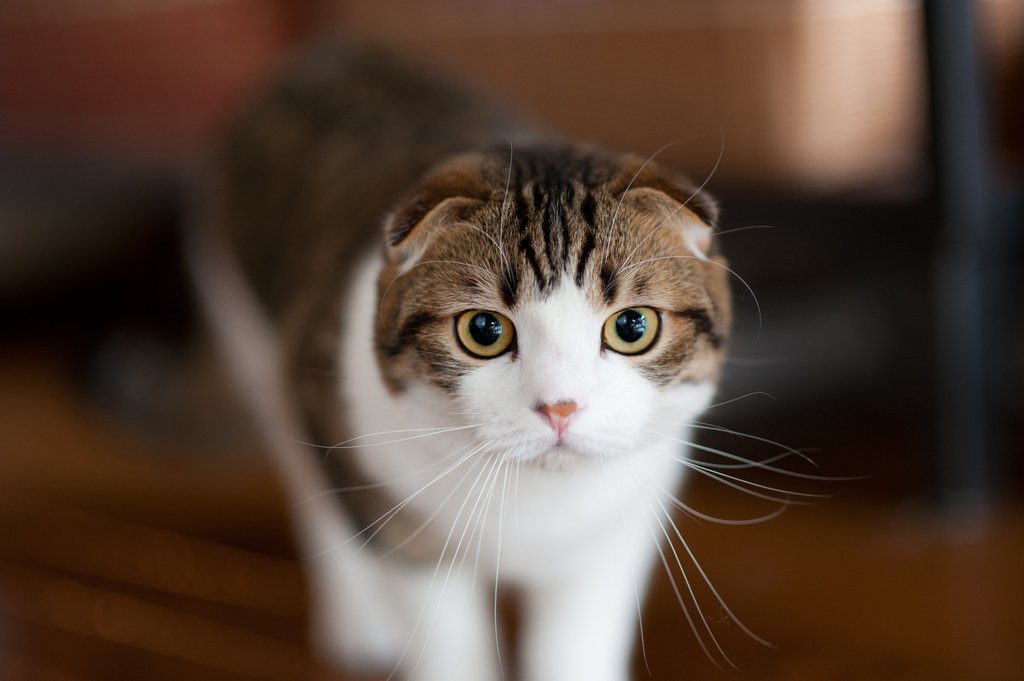
Care and maintenance
The basis of cheerfulness, health and longevity of your pet, first of all, is a proper balanced diet.
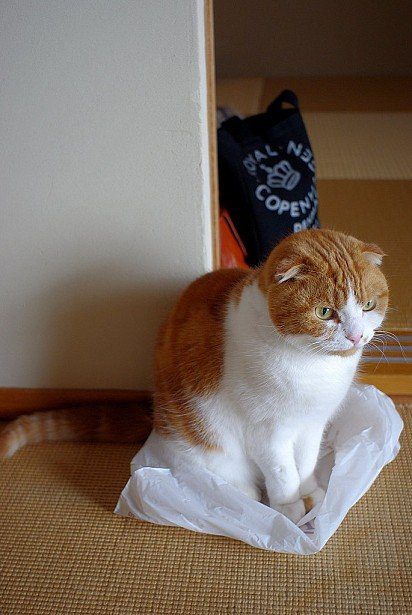
When taking a kitten from a breeder, do not forget to ask what kind of food the baby is used to. By using the original diet at first, you can gradually transition your Scottish Fold to the type of feeding that seems right to you, without any problems. As for the frequency, it is customary to invite a baby to a bowl until the age of four months 4 times a day, gradually moving to a three-time meal, and from 8 months – like an adult cat – 2 times a day.
What to feed a Scottish Fold cat?
There are three main options:
- Natural products. The diet of the animal should include low-fat sour-milk products, but it is better to refrain from cream and milk. Offal (chicken stomachs, heart, liver), low-fat varieties of lamb, chicken, turkey or rabbit will make up the meat menu. Scottish folds eat well various cereals (buckwheat, oatmeal, rice), as well as raw and boiled vegetables. Do not forget to only add a few drops of vegetable oil to vegetable dishes, this will help them to digest them better. Fish is allowed only sea and only boiled. Do not forget also about vitamin preparations.
- Ready food. It guarantees your pet a completely balanced diet, and can be used both dry and canned. The main rule with such a diet is to buy only quality products. In order not to make a mistake in choosing, refer to the recommendations of experienced breeders. It is better not to buy cheap bags, which are widely presented on the shelves of supermarkets. The benefits of their contents are doubtful, but the harm to the animal can be real. Remember to also make sure that the cat always has clean fresh water. Plus, dry food has a long shelf life, which makes it possible to stock up on them for future use.
- Combined feeding. The main rule is not to mix natural products with prepared foods in one meal.
Be careful! Many Scottish Folds are distinguished by the fact that they can eat at one time an amount of food that far exceeds the needs of the animal. Watch and do not overfeed the handsome lop-eared – extra calories will definitely not do him any good.
The characteristics of the breed require a very balanced attitude of the owner to top dressings with a high calcium content. Otherwise, you can get problems associated with a violation of the correct fit of the ears. But preparations with chondroetin will be useful as a therapeutic and prophylactic agent within reasonable limits.
Basic rules for caring for a Scottish Fold cat
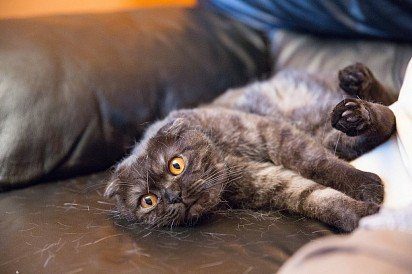
- Hair care. All care consists in periodic (about once a week) combing with a special brush for animals with short hair.
- Eye and ear care. Shell problems are uncommon for Scottish Folds, but still check them at least once every ten days. If you travel with a cat to nature, then an inspection should be done every time after returning home. To clean the ears (if necessary), use special solutions that can be bought at any veterinary pharmacy. “Current” eyes are effectively treated with 3% synthomycin ointment.
- Nail care. It is necessary to accustom a Scottish fold cat to manicure from childhood. The process itself will not cause you any difficulties, you just need to make sure that you do not accidentally touch the live zone of the claw with scissors, which is clearly defined by the presence of visible blood vessels.
- The washing up. The non-show Scottish Fold is bathed about once a month. But if you are going for awards, it all depends on the color of the coat. If a dark fold can be subjected to water procedures a week before the show, then for cats of lighter colors these periods are noticeably reduced, white animals are sometimes bathed even on the day of the competition. Needless to say, you only need to use special professional shampoos. They are not cheap, but due to the high concentration, they are enough for a long period of time.

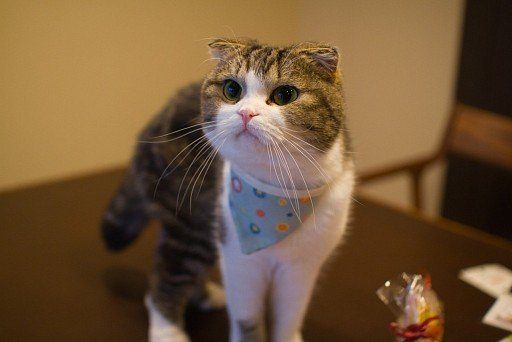
Health and disease of the Scottish Fold cat
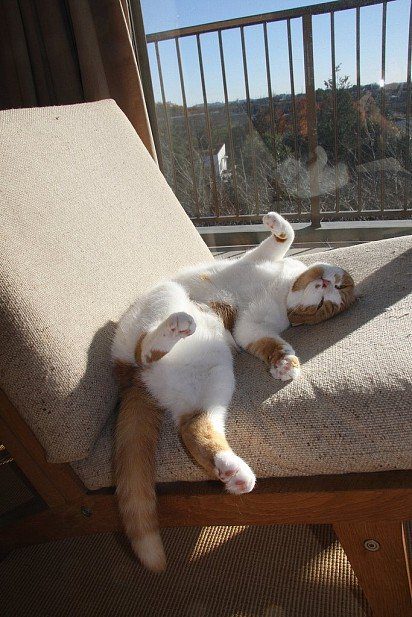
Scottish Fold cats have good health. There are examples when representatives of this breed lived to the age of 15 years or more. Only the musculoskeletal system requires special attention. Because floppy ears are the result of a mutation that affects cartilage, the joints are also at risk. As a result, the likelihood of occurrence and development of arthritic phenomena. Important preventive measures to prevent such problems are a balanced diet with the addition of the necessary vitamin preparations and weight control.
Heart and kidney diseases that occur in Scottish Folds are not related to the Fd gene. Moreover, statistics show that these diseases are characteristic of a large number of breeds, and the Scottish Fold is definitely not the leader in this list.
An important condition for maintaining the health of the animal is timely vaccination. Follow the vaccination schedule exactly, and visit the veterinarian for any signs of illness in your cat, then you can avoid most problems.
How to choose a kitten
Everyone knows that the problem of choice is not easy in itself. And if you choose a Scottish Fold cat as a pet, you need to approach the issue very responsibly.
- Firstly, you can take the kitten from the mother not earlier than the baby reaches the age of 11-13 weeks. This time is quite enough so that, on the one hand, the kitten can get all the vital antibodies and useful substances with milk, and on the other hand, it is enough to adapt to an independent life (eat a variety of food, go to the tray). It is also very important that by this time an experienced and responsible breeder will have already given the kittens the first prescribed vaccinations. If you want to make a choice before the specified time, then you can always agree on the bride with the owner of the cat-mother.
- Secondly, it is very important to remember that characteristic lop-earedness is the result of a gene mutation, in order to prevent the negative consequences of which one of the parents must be a straight. Compliance with this mating rule can only be guaranteed by professional breeders or specialized breeding nurseries. Buying a fold on the market or from random people is absolutely unacceptable.
You came for a kitten. What do you need to pay attention to?
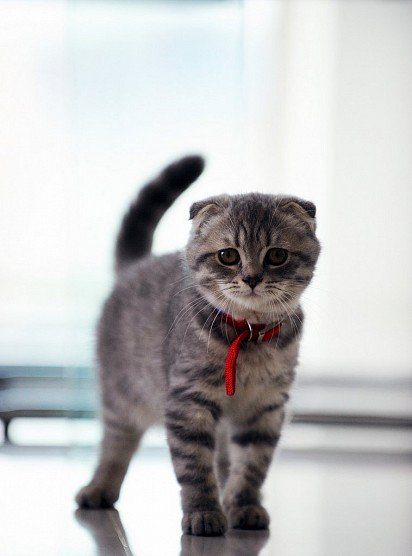
- Baby tail. The Fd mutation gene, which leads to lop-earedness, has its own effect on the cartilaginous tissue of other parts of the body, so the tail of a healthy kitten from the “correct” parents should be quite flexible, active, without visible creases and thickenings.
- Behavior of a small Scottish fold. It is better to get a kitten that is self-confident, active and inquisitive. You should not hope that a frightened animal that does not walk on its hands and hides in a corner will adapt well and quickly in your house, even if you are strongly convinced of this.
- Do not hesitate to look under the tail of the animal – it should be dry and clean there. The absence of smell from the mouth, discharge from the ears and eyes are signs of a healthy baby.
- Look at the parents of kittens, find out in what conditions the animals are kept.
When taking your baby home, do not hesitate to ask the breeder all the questions you are interested in. And there are a lot of them: what is the best way to feed kittens, where and when to get vaccinated, what are the main points to consider when caring for your little pet. The information received will help you properly organize the process of getting your baby used to your home and make it as painless and comfortable as possible for both parties.
Photo of Scottish Fold kittens
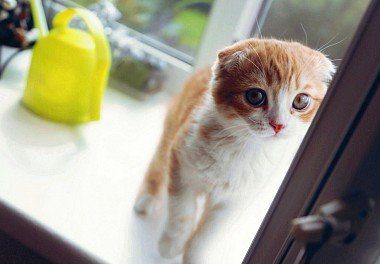
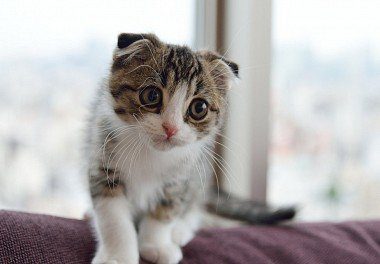
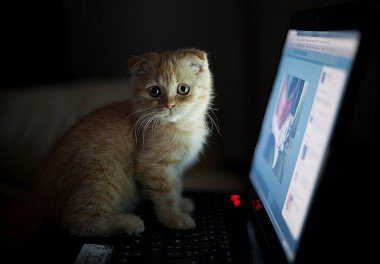
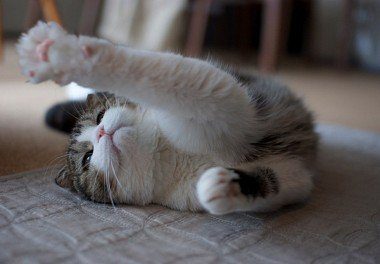
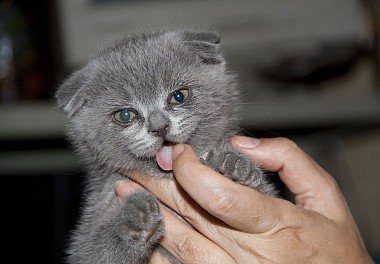
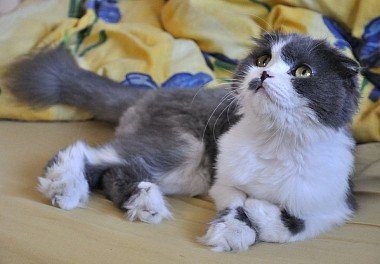
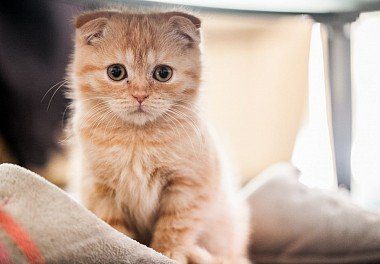
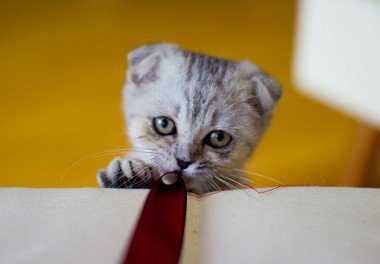
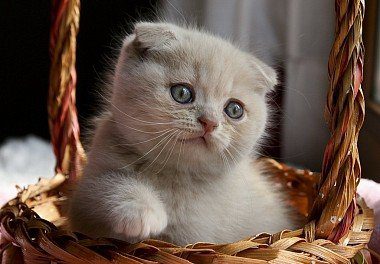
How much does a scottish fold cat cost
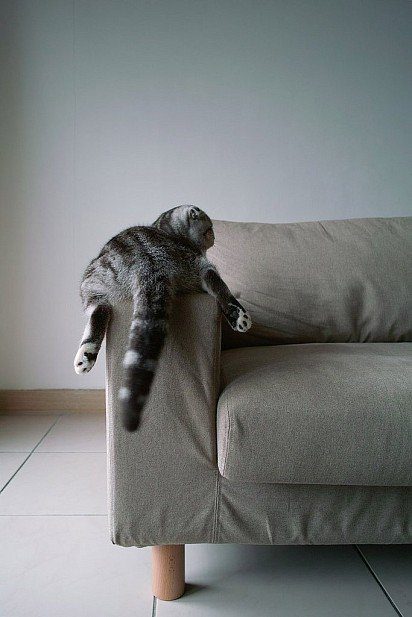
Prices for representatives of this breed depend on several factors, the main of which is the class of the kitten. Classification can be of three types – show, breed and pet.
The most expensive are show class kittens. These are elite representatives of the Scottish Fold breed, which do not deviate from generally accepted standards, with a good pedigree, promising breeding and exhibition status.
Breed kittens. This includes only Scottish cats suitable for breeding. They have no visible flaws, only slight deviations from the standard are allowed (not enough fitting ears, eye color mismatch with color). They cost a little less than show kittens.
The most affordable prices for pet-class animals. If you do not plan to participate in exhibitions or become a Scottish Fold breeder, then such a kitten will be the best acquisition.
There are some price gradations within the classes. So, the price of a kitten of a rare color will be higher. Even among animals of the same color, those whose pattern on the coat is brighter and more contrast will cost more.
The average prices for kittens of each class can be calculated by looking at the offers of various breeders or nurseries. The cost will vary from 250 to 1000$.



